A young couple turns to a life of crime, setting off a chain of events that will end in unexpected tragedy.
Episode Media
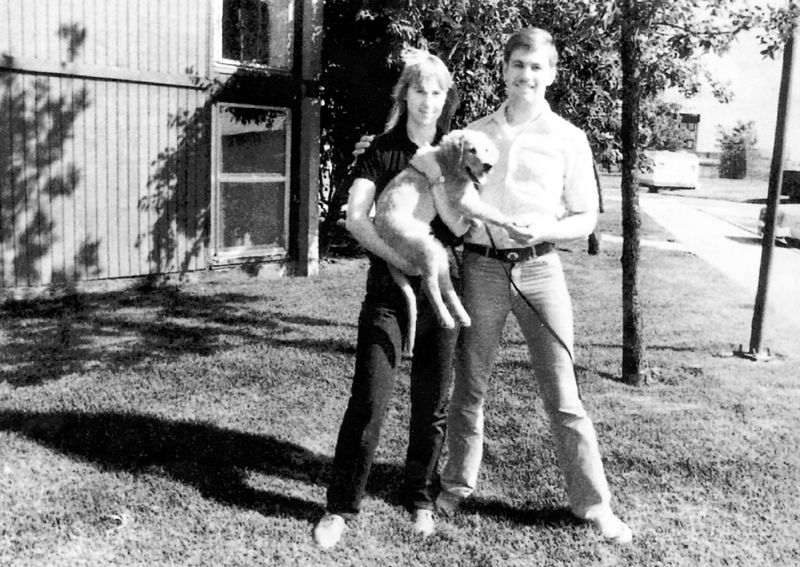
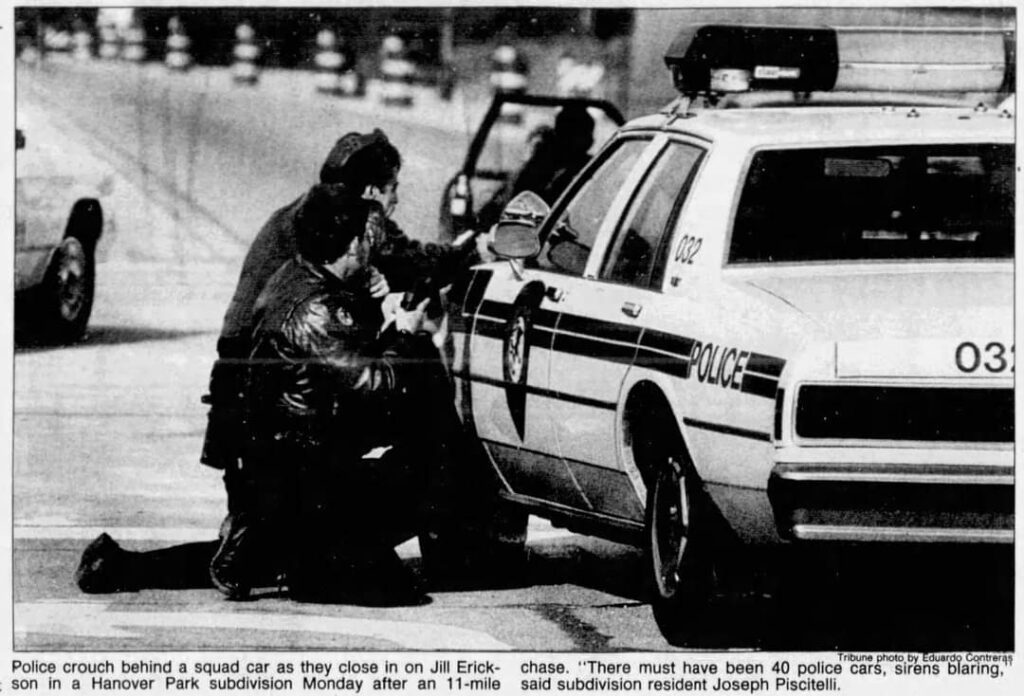
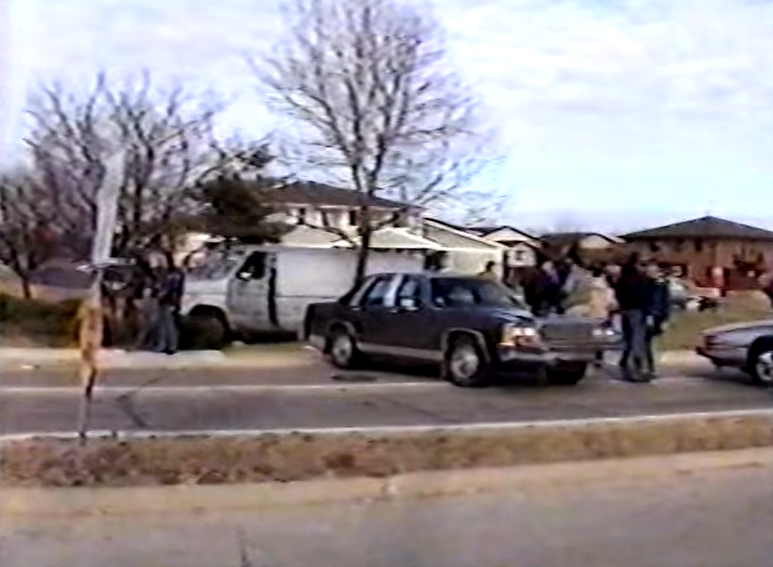
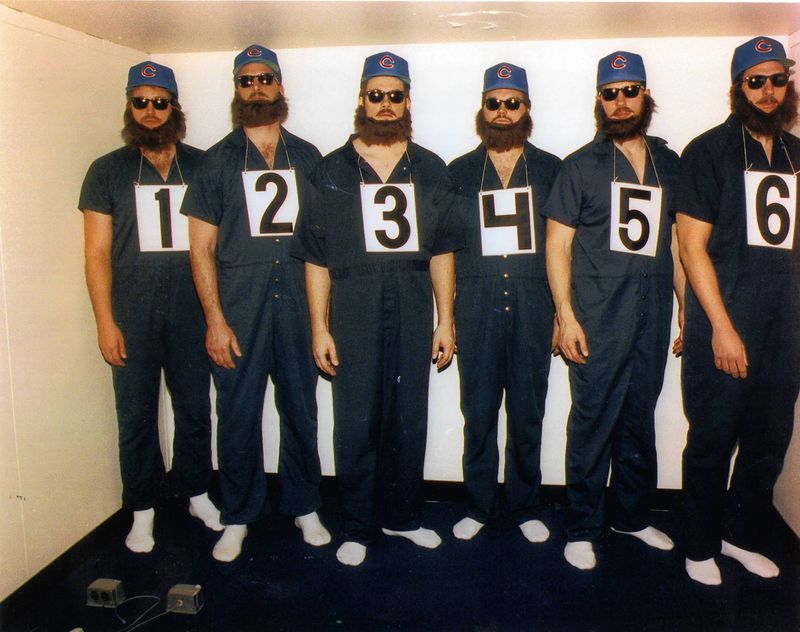
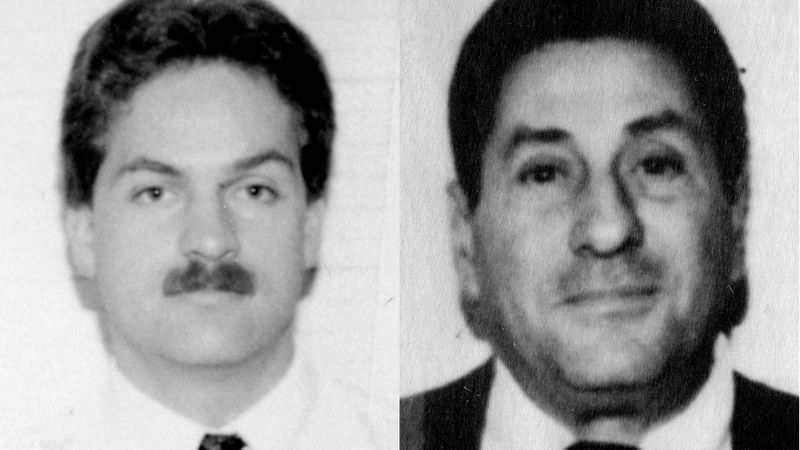
Episode Sources
- Jeffrey and Jill Erickson – Wikipedia
- Jeffrey Erickson’s 2-year crime spree
- 3 Die in Chicago Courthouse Shooting
- Bloody Ending to a Double Life
- Hanover Park bank robbers Jeffrey & Jill Erickson news reports 12/16/1991
- 2 federal court security officers honored 25 years after their killings
- Chicago History Podcast: The Bearded Bandit The FBI Files: Death Pact
Episode Transcript
Welcome back to Bite-Sized Crime. I’m going in a different direction for this week’s episode. In honor of Valentine’s Day, we’re taking a look at a couple whose love led to crime and tragedy. To be honest, I first started researching one of the most infamous couples of all time – the notorious bank robbers Bonnie and Clyde – but I soon fell down the Wikipedia rabbit hole and discovered quite a few other couples who let love lead them down the wrong path. Eventually, I settled on the case of Jeff and Jill Erickson, who were dedicated to each other in life and in crime. A disclaimer before we begin: this episode includes mention of suicide, so please take care while listening.
Jeffrey Erickson grew up in the suburbs of Chicago in the 1960s and 70s. His middle-class childhood was pretty normal by all accounts. His father was a manager at a telephone company, and his mother stayed at home with Jeff and his older brother Jim. Jeff was a sociable young man, a part of the swim team at Niles West High School. He was an average student, but was known for his excellent memory and encyclopedic knowledge of certain topics that interested him. After graduating in 1977, Jeff joined the Marine Corps, where he was awarded for his excellent marksmanship skills. He received an honorable discharge after four years of service.
In 1981, 23-year-old Jeff walked into a bar in Niles, Illinois, and met Jill Cohen, a tall, blonde high school senior celebrating her 17th birthday. The pair were instantly taken with each other, bonding over their love of animals. The 6-year age gap and the fact that Jill was still in high school didn’t seem to make a difference. Jeff nicknamed her “Gorgeous” and from that day, the two were inseparable.
But Jill’s family life wasn’t as idyllic as Jeff’s; her parents were going through a bitter divorce, something that weighed heavily on Jill, who struggled with depression. Six months into their relationship, Jill dropped out of school and moved in with Jeff, partly to escape the drama at home.
To Jill, Jeff seemed like a lifeline. The couple were crazy about each other, and in July of 1983, they married in a civil ceremony. For the first few years of their marriage, Jeff worked as a truck driver and Jill studied chemistry at Loyola University while working as a lab technician. They acquired a growing number of dogs and birds, much to the frustration of their landlords. The couple moved often to avoid being evicted or having to get rid of their beloved animals.
In 1986, Jeff joined the Chicago Police Academy, then took a job with the Hoffman Estates Police Department in the Chicago suburbs. But unfortunately, Jeff was not cut out for law enforcement. Although he was good at interacting with members of the public and his marksmanship was unparallelled, Jeff was eventually let go from the department, with police chief Donald Cundiff later saying that Jeff lacked common sense and was inept at basic police work. Jeff himself admitted that he was far too lenient on lawbreakers and hated making arrests – it made him feel like he was ruining someone’s day.
But soon, Jeff would use his knowledge of law enforcement to become a lawbreaker himself, and he would bring Jill along for the ride.
On January 9, 1990, Jeff walked into First Nationwide Bank in Wilmette, Illinois, wearing a fake beard, baseball cap, and sunglasses and carrying a police scanner and a gun. He told the bank tellers that it was a hold-up, then he walked out with thousands of dollars in cash. This was the beginning of a 22-month crime spree in which Jeff robbed eight banks in the Chicago area and stole nearly $200,000 – adjusted for inflation, that would be over $430,000 today.
Locally, Jeff Erickson became known as “the Bearded Bandit” – his crimes were carried out with military precision and preparation. But he wasn’t alone in his endeavors; Jill Erickson was working just as hard behind the scenes, helping Jeff plan each hit and making sure there was always a getaway car nearby.
By February of 1991, Jeff and Jill seemed to be living the good life. They bought a two-story townhouse in Hanover Park with a large cash down payment. Jeff told the real estate agent that he was in business for himself – money was no problem. A few months later, Jeff opened a used bookstore in the village of Roselle. He had always loved to read, and he liked working with people. His bookstore was a success, and customers were impressed with his knowledge of classic literature.
But things were not so great under the surface. Jill’s struggle with depression eventually led to her abusing alcohol. The normally calm Jill would get angry and violent when she was drinking. When she was sober, she experienced mood swings that were confusing and frustrating to both her and Jeff. Eventually, Jeff took Jill to a local hospital, where she was diagnosed with schizophrenia and manic depression – now known as bipolar disorder. She received treatment and was released with new medication and therapies to help her manage her diagnoses.
In addition to these struggles, Jill and Jeff were also having a difficult time managing their money. Jill was maxing out their credit cards on a regular basis, and Jeff was pouring money into the bookstore. As they fell deeper into debt, the need to rob banks grew stronger, and so did their confidence in the plan. So far, the identity of the Bearded Bandit was unknown – armed with his police scanner, he always got in and out before anyone could catch him.
On November 4, 1991, Palatine police officer Kevin Maher spotted a Honda with an expired license plate and initiated a traffic stop. The driver of the car slammed on the brakes, jumped out of the car, and fired three shots from a rifle into Maher’s squad car, striking him in the shoulder. Maher threw his cruiser into reverse and immediately called for backup. Witnesses reported that the shooter, wearing what appeared to be a fake beard and sunglasses, calmly got back into his car and drove away. A manhunt ensued, with helicopters circling the city for hours and local schools put in lockdown. Law enforcement officers went door to door in the community, looking for any sign of the bearded fugitive. But it seemed that the man had abandoned the stolen Honda and taken off in another vehicle that had been strategically left for him to find.
Because the description of the shooter was similar to that of the bank robber police had been hunting, the FBI was called in to assist. A special task force was created, made up of federal agents and detectives from seven local police departments. They examined every bank robbery in the Chicago area over the past few years, looking for patterns. The Bearded Bandit seemed to favor Japanese-made vehicles, all of which were stolen. He would leave the banks in one vehicle, then change vehicles a few blocks away. He wore layers of clothes to disguise his weight, and he always wore gloves so he wouldn’t leave fingerprints.
Detectives also suspected that their culprit may have been a cop. Security footage from the banks showed that the bandit was comfortable with a gun, perhaps even having extensive training with firearms. He always held his weapon in a particular stance, one that was often taught in law enforcement training. His use of a police scanner and the fact that he robbed banks in different jurisdictions seemed to indicate an insider’s knowledge of police investigations. But still, he remained elusive.
A few weeks after Officer Maher’s shooting, the Bearded Bandit hit First Chicago Bank in Elk Grove Village. Again, he was in disguise – a fake beard and sunglasses, carrying a police scanner in one hand and a gun in the other. But this time, he had an accomplice – someone described as 5’10” with a slight build, also wearing a fake beard and sunglasses. The accomplice covered the door while the Bearded Bandit grabbed the cash. Then the pair escaped in a stolen vehicle that was later found abandoned a few blocks away.
Authorities were frustrated, but they were closing in on their suspects – they just needed a lucky break.
On December 10, 1991, federal agents spotted a stolen Mazda sitting at the edge of a parking lot with its ignition wires exposed. For six days, they staked out the car, watching and waiting. Finally, on December 16th, a rusty gray van pulled into the parking lot, and a man got out. He approached the Mazda and started to hotwire the engine. Immediately, officers surrounded Jeff Erickson and placed him under arrest. He was discovered to be carrying two loaded guns, a fake beard, and two fake mustaches.
As Jeff was taken into custody, Jill Erickson, driving the gray van, peeled out of the parking lot. She led police on a high-speed chase throughout town, the van reaching 110 miles per hour at times. Eventually, she turned into a residential neighborhood and found herself trapped at a dead end. Jill pulled out a gun and began shooting at the police officers, who returned fire, shooting out the van’s tires. Jill was also struck, but rather than surrender to police, she continued to race through the neighborhood, finally crashing into a low cement wall. Police fired several more rounds at the van until there was nothing but silence. When they approached the vehicle, they found Jill Erickson, unconscious and bleeding. Paramedics rushed her to the hospital while police processed the scene.
While this dramatic shoot-out was taking place, Jeff was handcuffed in the back of a squad car, listening to the entire event over the police radio. He was stunned to hear that shots had been fired, but he wouldn’t find out Jill’s fate until later that evening, when he was taken to the Metropolitan Correctional Center in Chicago and informed that his wife was dead. A few days later, he was taken to see her body at the funeral home, handcuffed and surrounded by federal agents. An autopsy would later reveal that the shot that killed Jill Erickson came from her own gun.
When authorities searched the Ericksons’ townhouse, they discovered a cache of firearms and ammunition along with knives, smoke grenades, gas masks, and a multitude of disguises. There was also a six-foot safe in the garage and a bulletproof vest that had been delivered in the mail that day, but that hadn’t yet been opened. But perhaps the most interesting find was the tape in the VCR – the 1967 movie Bonnie and Clyde.
On February 12, 1992, Jeffrey Erickson was indicted on federal charges of bank robbery and state charges of shooting a police officer. He pleaded not guilty, and his trial was set to begin five months later. While sitting in jail, Jeff told reporters that he missed his wife more than he could have imagined. “Jill and I were both loners. I guess we were inseparable. What’s keeping me okay in here is that I don’t have to worry about her now.”
Jeff’s trial began in July of 1992. Although Officer Maher could not identify Jeff as his shooter, federal agents testified that the shell casings found at the scene of Maher’s shooting matched a gun found in the Ericksons’ home. Some of the bank tellers also had trouble identifying the Bearded Bandit. When an employee of Savings of America Bank was asked to identify the robber in the courtroom, they pointed to a reporter from the Chicago Tribune instead of Jeff Erickson.
Jeff was officially charged with eight bank robberies, although authorities suspected him of eleven. Jeff told his lawyer that it was probably closer to twenty.
Just a few days into the trial, Jeff’s mother noticed that her son was acting oddly. She pulled his lawyer aside and told him that she thought Jeff might try to make a run for it. The lawyer passed this information on to the U.S. Marshals, but they didn’t seem to put any stock in it.
On July 20, 1992, while being transported from the Dirksen Federal Building to the Metropolitan Correctional Center, Jeffrey Erickson suddenly slipped out of his handcuffs and disarmed a deputy marshal, snatching her service revolver and fatally shooting her partner, Deputy Marshal Bill Frakes. Jeff turned and ran, heading up a ramp that led from the building’s basement to the street.
Harry Belluomini, a retired detective working security in the Dirksen Building, heard the gunfire and rushed to the scene. Jeff tried to convince Belluomini that he was an FBI agent, thinking that the suit he was wearing for the trial would be a convincing disguise. But the veteran cop knew better, firing six rounds at Jeffrey Erickson and striking him in the back. Jeff fell to one knee, saying, “I’m going to jail. I’m going to die anyway. I’m going to take everyone with me.” He then fatally shot Harry Belluomini before turning his gun on himself. A small handcuff key was found next to his body.
In the end, Jeff and Jill Erickson got the Bonnie and Clyde ending they wanted. Movies were made about them, and their names would go down in history alongside their criminal heroes. But their love ended not only in tragedy for themselves, but also for the families of Bill Frakes and Harry Belluomini, who died in the line of duty and will not be forgotten.
